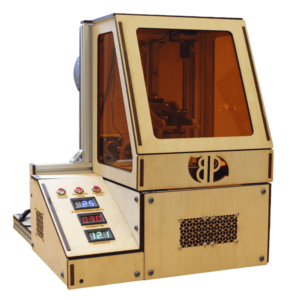Project Description
Organic Robotics Laboratory
The Organic Robotics Laboratory led by Dr. Shepherd at Cornell University is an interdisciplinary team of mechanical engineers, materials scientists, and chemists. We are creating new breed of soft robots that mimic the capabilities of living organisms. By using soft materials such as elastomers and hydrogels we can create new modes of human/machine interaction . We are developing novel mechanisms and materials to realize these ideas. I have been working with the lab since Fall 2013, with most of my focus on creating machines to autonomously fabricate complex, active structures. My primary involvement has been with the following projects:
3D Printing
Our lab is working to create novel mechanisms and materials to extend the capabilities of 3D printing. We are building technologies that will enable us to directly fabricate complex systems, including soft robots.
Digital Mask Projection Stereolithography (DMP-SL)
The picture to the right shows a Digital Mask Projection Stereolithograpy (DMP-SL) 3D printer that I designed and built for the lab. More information about this project can be found here. This system serves as a high resolution platform for developing printable, soft materials. The ultimate goal of this work is the ability to directly fabricate electromechanical systems with embedded sensors and actuators.
The video below shows initial work using commercially available materials to directly 3D print soft pneumatic actuators. This system allows for the direct fabrication of monolithic high degree of freedom (DOF) actuators. Inspired by muscular hydrostats such as the ocotopus tentacle, these actuators use anatgonistic pairs of air chambers to created bending motions in two directions. Architectures have been developed to cycle these actuators with a period of less than 70ms. By combing multiple actuators together, complex 3D motions can be achieved. This is shown with a 4-DOF tentacle at the end of the video.

Direct-write Assembly
In addition to the stereolithographic techniques desribed above, I have also developed a custom setup for 3D printing using direct-write assembly. This system using either pneumatic or mechanical pressure to control the deposition of fluids from a syringe. By precisely contolling the movement of the syringe and the timing of the extrusion, it is possible to create 3D structures using a wide variety of materials. By using multiple, independently controlled syringes, we can fabricate multi-material strucutres. The videos below show test prints with this system. The video on the right uses UV LEDs to cure silicone as it is deposited.
Hyperelastic Light Emitting Capacitors (HLEC)
Coming soon: manuscript currently under review






